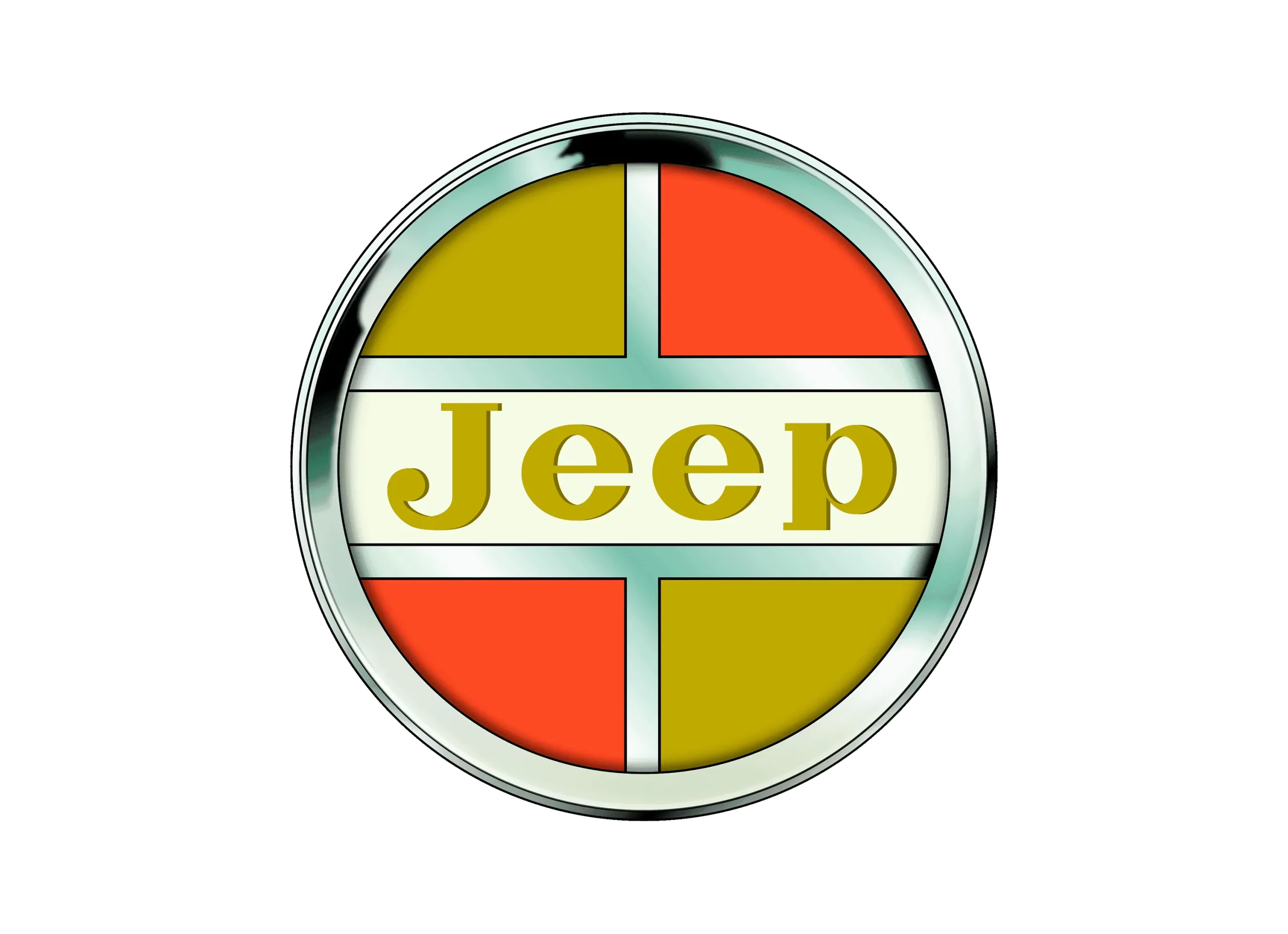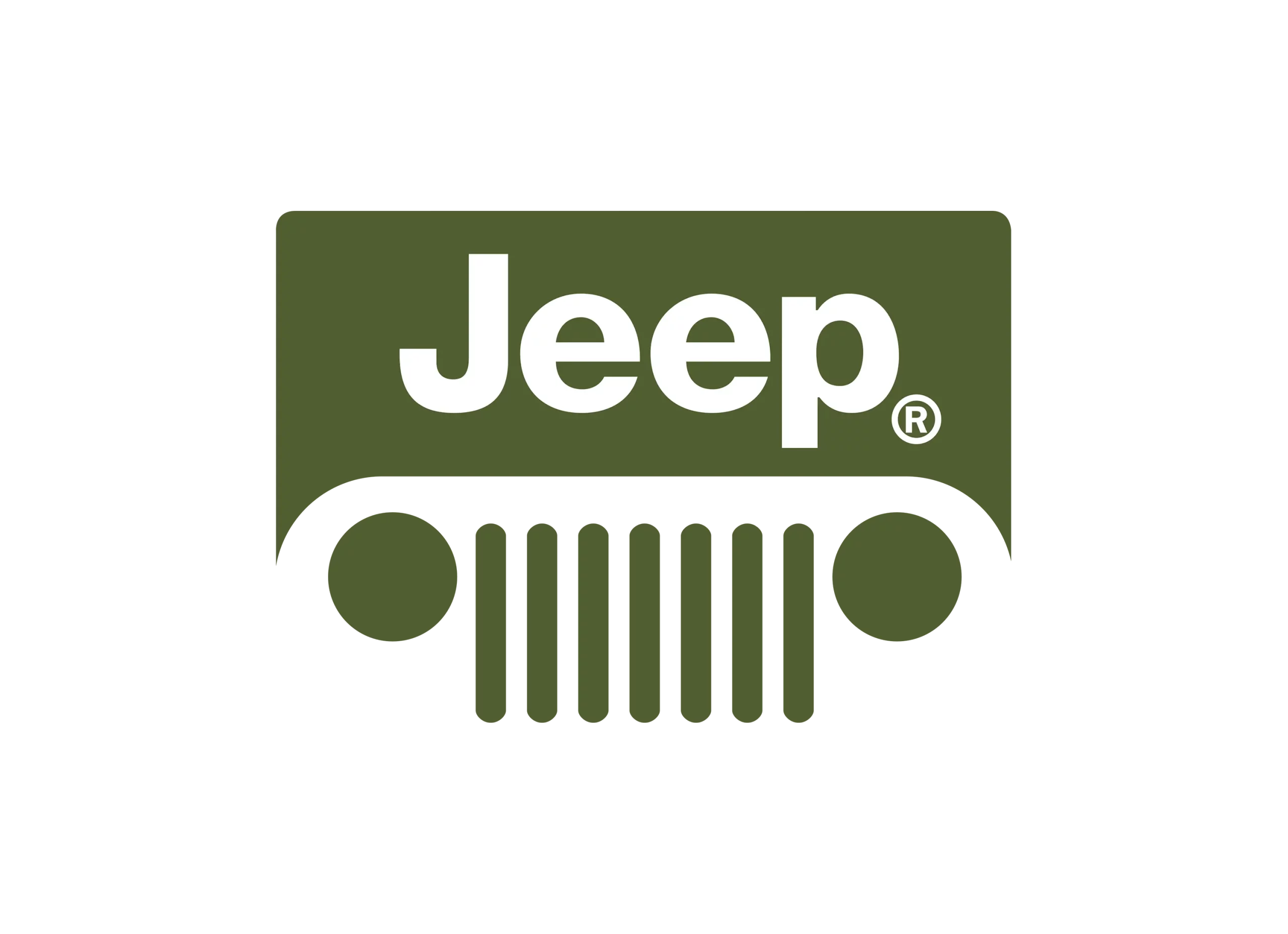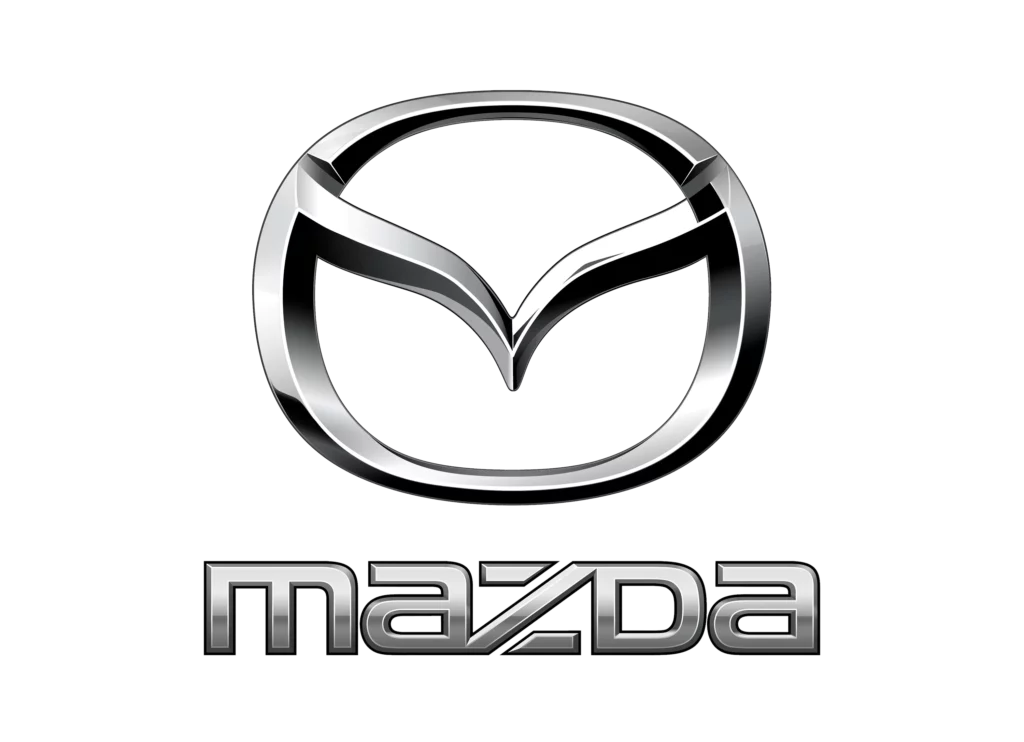Jeep logo

Jeep logo has gone through several changes over the years, and it no longer features the olive green color that it was originally associated with. Today, the Jeep logo is a simple, sleek design that features the word “Jeep” in all capital letters.
The current Jeep logo was introduced in 1992, and it has remained largely unchanged since then. The letters in the logo are bold and sans-serif, which gives the logo a modern and timeless feel. The font used in the logo is unique to Jeep, and it has become instantly recognizable to people around the world.
The logo’s design is simple, yet powerful. The bold, capital letters communicate strength, durability, and reliability, which are all qualities that are associated with the Jeep brand. The logo’s clean lines and lack of decoration also suggest a no-nonsense approach, which is consistent with the Jeep brand’s reputation for ruggedness and practicality.
In conclusion, while the Jeep logo has evolved over the years, the current design is a simple and effective representation of the brand’s values and identity. The bold, sans-serif font communicates strength and durability, while the lack of decoration suggests practicality and no-nonsense approach. Overall, the Jeep logo is a classic design that will likely remain relevant for many years to come.
Jeep Brand Overview
1943
Auburn Hills, United States
Jeep is an iconic American brand that has become synonymous with off-road adventure and rugged durability. The brand’s origins can be traced back to 1940 when the US Army requested proposals from 135 automakers for a lightweight, all-terrain vehicle. The winner of the competition was American Bantam, but due to their small size and financial difficulties, they were unable to produce the vehicle in the quantities required by the military.
Instead, the US Army turned to two larger companies, Ford and Willys-Overland, to produce their design of the vehicle known as the Willys MB. This vehicle became the prototype for what would eventually become the Jeep brand.
After the war, Willys-Overland began producing civilian versions of the Jeep, which proved to be popular with farmers, hunters, and outdoor enthusiasts. The brand continued to evolve over the years, with various models being introduced, including the iconic Jeep Wrangler.
In 1987, the brand was acquired by Chrysler, and it has since become part of the Stellantis corporation, which also includes other popular brands like Chrysler, Dodge, and Ram. Today, Jeep continues to be a popular choice for those who want a vehicle that can handle any terrain and any adventure.
The Jeep logo features the word “Jeep” in bold, block letters, with a small star located above the “J”. The design of the logo has remained relatively unchanged since the brand’s inception, reflecting its heritage and commitment to rugged durability.
Jeep History
Jeep is an iconic American brand that has been associated with rugged, off-road vehicles for more than 75 years. The company has a storied history that dates back to the early days of World War II, when the US Army needed a vehicle that could perform well in tough conditions. Today, Jeep is a division of the Stellantis corporation, which was formed in 2021 by the merger of Fiat Chrysler Automobiles and Groupe PSA.
History of Jeep
The history of Jeep begins in 1940, when the US Army began looking for a new vehicle that could replace the aging motorcycle and horse-drawn transport it was using at the time. The Army issued a request for proposals to American car manufacturers, asking them to develop a prototype vehicle that would meet its requirements. The specifications called for a vehicle that could carry four soldiers and a 600-pound payload, climb a 60% incline, and ford a 30-inch deep stream.
Several companies submitted proposals, including American Bantam, Willys-Overland, and Ford. Bantam’s proposal was selected, but the company was too small to produce the number of vehicles the Army needed. Willys-Overland and Ford were both awarded contracts to produce the vehicle, with Willys-Overland being selected as the primary supplier.
The vehicle that was produced by Willys-Overland was called the Willys MB, but it quickly became known as the Jeep. The origins of the name are unclear, but some sources suggest that it was a contraction of the term “General Purpose” (GP), while others suggest that it was named after a cartoon character of the same name.
The Jeep was an instant success, and it quickly became the workhorse of the US Army during World War II. Its ruggedness, versatility, and off-road capabilities made it ideal for a wide range of tasks, from reconnaissance to troop transport to hauling supplies. The Jeep also saw service with other Allied armies, including the British and the Soviet Union.
After the war, Willys-Overland began producing a civilian version of the Jeep, called the CJ-2A. This was the first mass-produced 4×4 vehicle for the civilian market, and it was a huge success. Over the years, Jeep has continued to produce a wide range of off-road vehicles, including the Wrangler, Cherokee, and Grand Cherokee.
In 1945, the war was over, and the demand for military vehicles had dropped sharply. Willys-Overland realized that they had to find a new market for their Jeeps. They saw that the American public was fascinated with the idea of off-road vehicles, and so they marketed the Jeep as a civilian vehicle.
In the post-war years, the Jeep was a huge success. Farmers and ranchers loved the ruggedness of the vehicle, and it became a popular choice for outdoor enthusiasts as well. In 1949, Willys-Overland introduced the Jeepster, a sporty two-door convertible, which was the company’s first attempt at making a passenger car.
Throughout the 1950s and 1960s, the Jeep continued to evolve. The company introduced the CJ-5, a smaller and more nimble version of the original Willys Jeep, and the Jeep Wagoneer, a four-wheel-drive station wagon that offered more comfort and luxury than previous Jeep models.
In the 1970s, Jeep faced increased competition from other off-road vehicle manufacturers, and the company struggled financially. In 1970, American Motors Corporation (AMC) purchased the Jeep brand from Kaiser Industries, and over the next decade, AMC worked to modernize and expand the Jeep lineup.
In the 1980s, Jeep’s fortunes took a turn for the better. The company introduced the Cherokee, a compact SUV that became one of the best-selling vehicles in the United States. In 1987, Chrysler purchased AMC, and Jeep became part of the Chrysler family.
Today, Jeep is one of the most recognizable brands in the world. The company offers a range of vehicles, from the rugged Wrangler to the luxurious Grand Cherokee, and it continues to innovate with new technologies and designs. Jeep is also known for its strong connection to the outdoors and its commitment to sustainability, making it a favorite among adventure-seekers and environmentally-conscious consumers alike.
Overall, Jeep’s history is one of innovation, perseverance, and a deep connection to American values. The brand’s iconic design and reputation for off-road capability have made it a favorite among car enthusiasts and everyday drivers alike, and it shows no signs of slowing down anytime soon.














